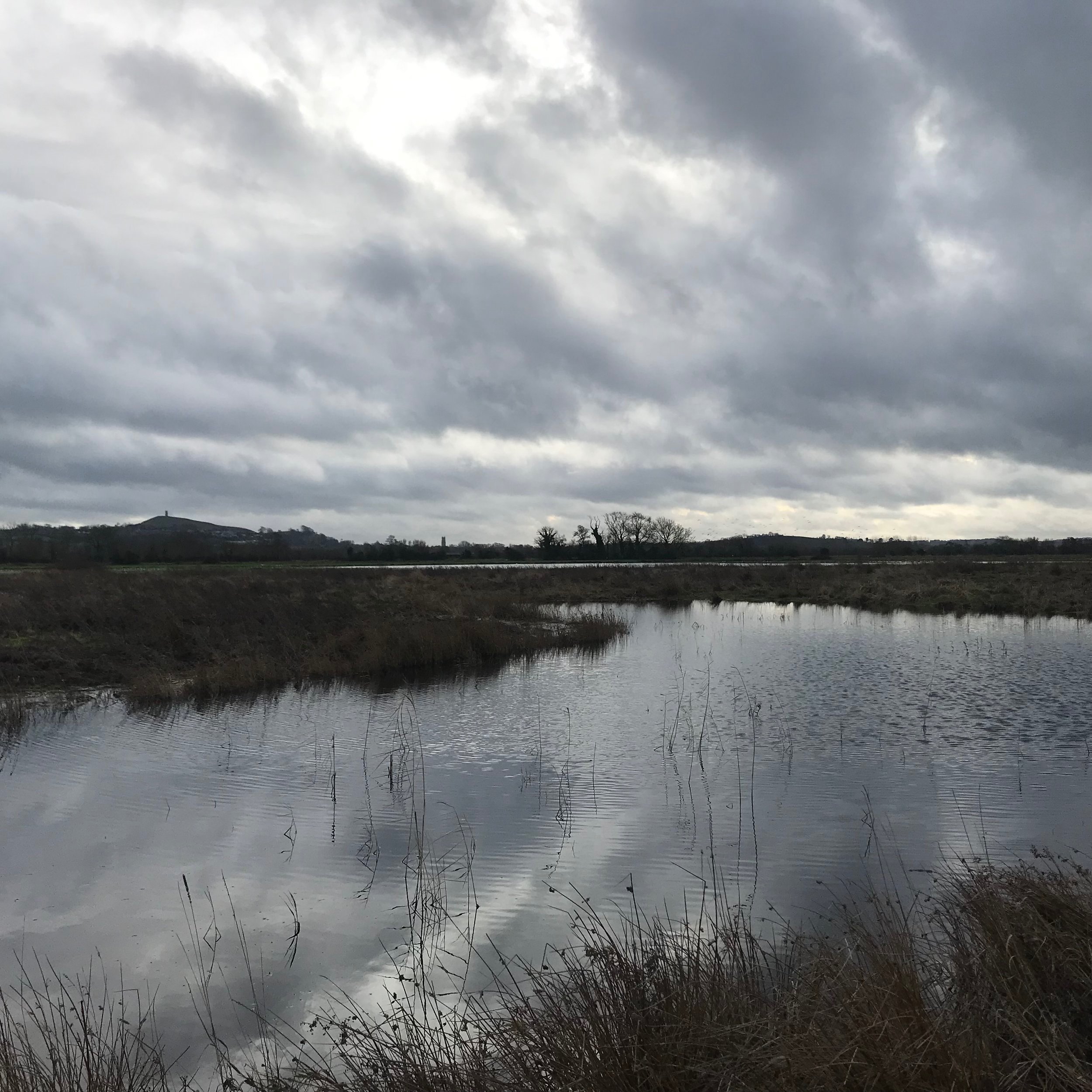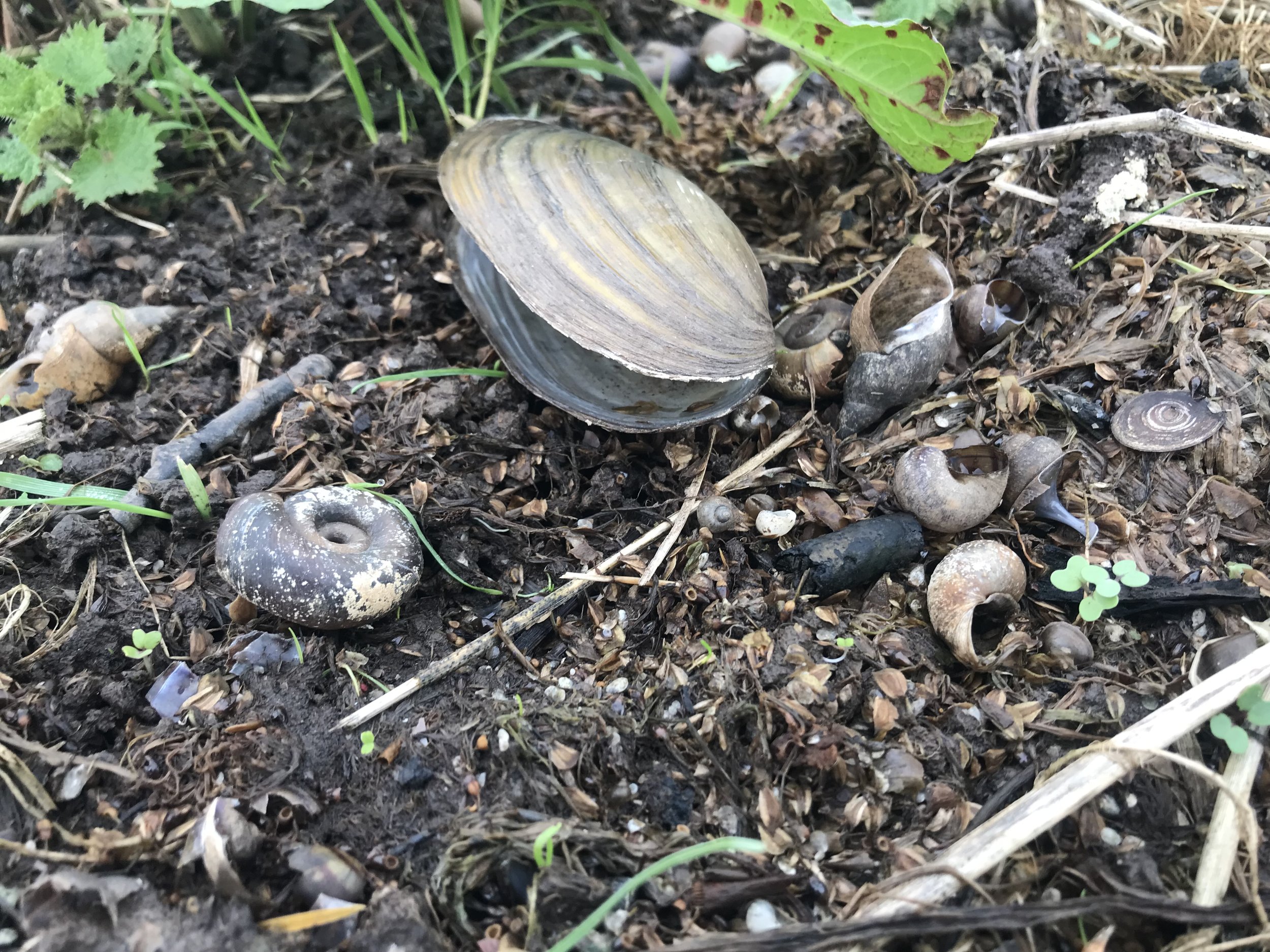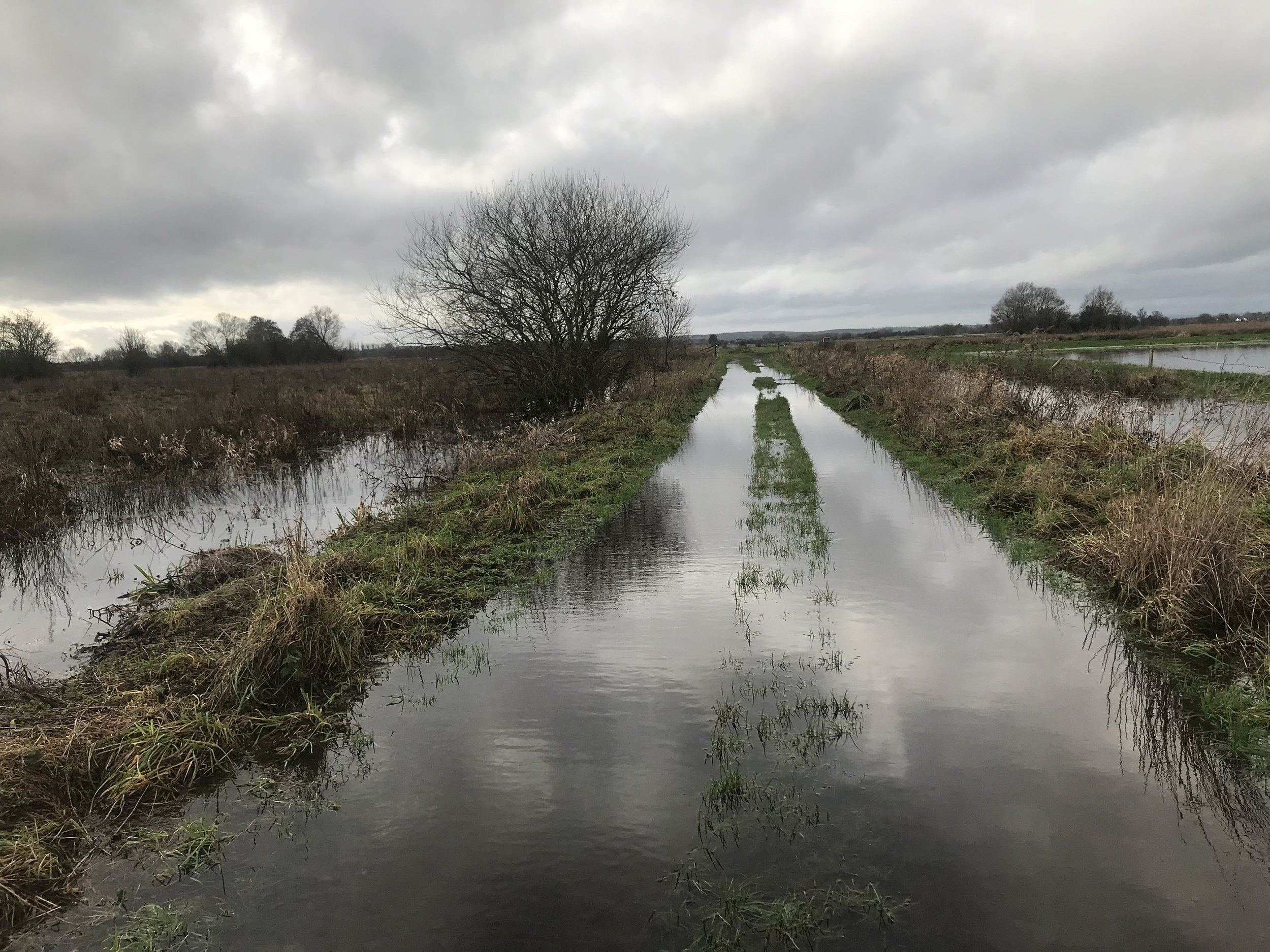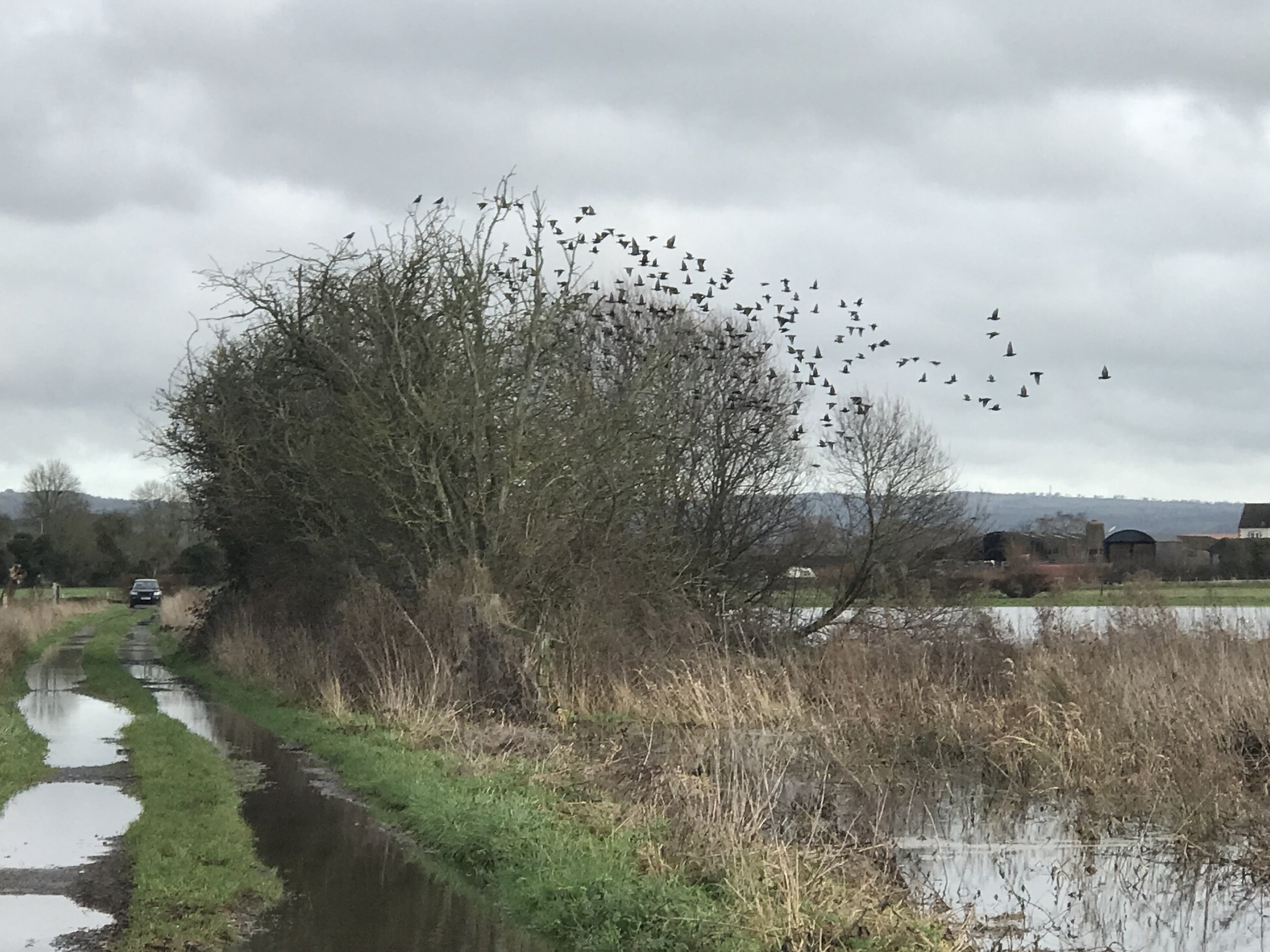The Isle of Athelney is an island again!
It’s been very rainy for the first few weeks of this year, and that has meant a huge amount of water pouring through the Somerset Levels. It’s not as big a flood as we saw in 2014, but it’s still more than usual.
Of course the Somerset Levels have always flooded and held water - it’s what made them a wetland after all. These drone images taken a couple of weeks ago give you some idea of the extent. We estimate there is probably more than a billion litres of water on our 73 acre site at Athelney at the moment, which the Environment Agency estimates to be over four metres deep in places. As our friend and sometime contributor Peter Cooper usefully points out this is just enough to submerge a Tyrannosaurus rex. It has meant too that the Isle of Athelney, where Alfred the Great famously hid in the swamps from the Vikings, is an island once again, at least for a little while.
In the future as this land starts to wild up it will look very different - there will be more trees and snags poking up through the water, long grass and reeds may form and dead vegetation will gather in corners and eddies. Perhaps one day eagle, beavers and pelicans will be seen swimming and feeding in the flooded pools. At the water recedes it will look more alive than it has in centuries. We can’t wait.
Nor is it just our site at Athelney which has been flooded, though it has been the most spectacular. The area around Godney has also seen a lot of water, with our land up there finding itself under several inches of water (see gallery). On our rewilding site at Waste Drove, the changes to the land around are clear as dead grass and plants stick out above the deluge, and small birds cling to the stalks and branches.
Overall flooding is part of what makes the Somerset Levels what it is and the wildlife is generally able to cope and adapt. But of course that does not mean it is good for everyone. We found this poor little mole after a recent flood. While it is obviously sad for the individual creature, the death rate for small mammals must be incredibly high in winter in any case, and we are always astonished by how quickly mole hills start to reappear in areas that have been recently submerged.





